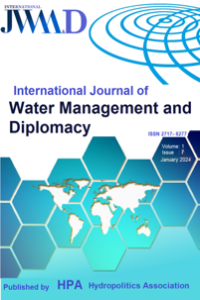Abstract
References
- Finney, Denise M., Sara, E Eckert., & Jason, P.K. (2015). ‘Drivers of Nitrogen Dynamics in Ecologically Based Agriculture Revealed by Long-Term, High-Frequency Field Measurements. Drivers of Nitrogen Dynamics in Ecologically Based Agriculture Revealed by Long-Term, High-Frequency Field Measurements’. 25 (8): 2210–2227. https://www.Jstor.Org/Stable/24700689.
- Chaibi, M.T. (2013). Thermal Solar Desalination Technologies for Small-Scale Irrigation American Journal of Energy Research. Vol. 1(2) :25-32.
- Daniel M. (2009). Solar Water Disinfection to Reduce Childhood Diarrhea in Rural Bolivia: A Cluster-Randomized Controlled Trial, Plos Hub for Clinical Trials, plosmedicine.org, Solar Water Treatment - http://www.sodis.ch. Joshi, J.R., J.F. Moncrief, Swan, J.B. & Malzer, G.L. (1994). Soil Till. Res. 31: 225
- Khan, M.S., Ullah, M.M. & Hassan, M.K. (2008). Bioslurry management and its effect on soil fertility and crop production. Project Report, Ghazipur. Lu, Q. & Xiao, Yu. (2022). From Manure to High-Value Fertilizer : The Employment of Microalgae as a Nutrient Carrier for Sustainable Agriculture. Algal Research. https://doi.org/10.1016/j.algal.2022.102855.
- Usman, K., Nasir, M.A. & Sultan, M. (2012). Evaluation of Biofertilizer Application to Ameliorate the Environment and Crop Production. Pakistan Journal of Agricultural Sciences. 49(4): 527-531.
Abstract
Chemical, physical, biological properties and water temperature plays big role on water quality. Water temperature depends mainly upon the amount of solar radiation in water. Technical research on using efficient, optimal water is crucial for sustainable agricultural development and vegetative and generative yield.
This paper highlights the impact of solar radiations on changes in saline water quality parameters and turnip growth in comparison with fresh water application during pot study in the laboratory. A Plexiglas tank/chamber was used for the application of sunrays on the water and sunrays treated water was analyzed for quality parameters and turnip growth. Results of the present study revealed that no significant changes in physiochemical parameters of water were observed both in low saline and fresh water. Turnip yield is significantly better with the application of fresh water and water productivity was found to be in higher than the low saline water treated with solar radiation. Further studies are suggested to evaluate in depth the impact of solar radiation in irrigated agriculture for making concrete recommendations.
Keywords
References
- Finney, Denise M., Sara, E Eckert., & Jason, P.K. (2015). ‘Drivers of Nitrogen Dynamics in Ecologically Based Agriculture Revealed by Long-Term, High-Frequency Field Measurements. Drivers of Nitrogen Dynamics in Ecologically Based Agriculture Revealed by Long-Term, High-Frequency Field Measurements’. 25 (8): 2210–2227. https://www.Jstor.Org/Stable/24700689.
- Chaibi, M.T. (2013). Thermal Solar Desalination Technologies for Small-Scale Irrigation American Journal of Energy Research. Vol. 1(2) :25-32.
- Daniel M. (2009). Solar Water Disinfection to Reduce Childhood Diarrhea in Rural Bolivia: A Cluster-Randomized Controlled Trial, Plos Hub for Clinical Trials, plosmedicine.org, Solar Water Treatment - http://www.sodis.ch. Joshi, J.R., J.F. Moncrief, Swan, J.B. & Malzer, G.L. (1994). Soil Till. Res. 31: 225
- Khan, M.S., Ullah, M.M. & Hassan, M.K. (2008). Bioslurry management and its effect on soil fertility and crop production. Project Report, Ghazipur. Lu, Q. & Xiao, Yu. (2022). From Manure to High-Value Fertilizer : The Employment of Microalgae as a Nutrient Carrier for Sustainable Agriculture. Algal Research. https://doi.org/10.1016/j.algal.2022.102855.
- Usman, K., Nasir, M.A. & Sultan, M. (2012). Evaluation of Biofertilizer Application to Ameliorate the Environment and Crop Production. Pakistan Journal of Agricultural Sciences. 49(4): 527-531.
Details
| Primary Language | English |
|---|---|
| Subjects | Agricultural Engineering (Other) |
| Journal Section | Research Articles |
| Authors | |
| Publication Date | February 4, 2024 |
| Published in Issue | Year 2024 Volume: 1 Issue: 7 |
.png)
.png)

